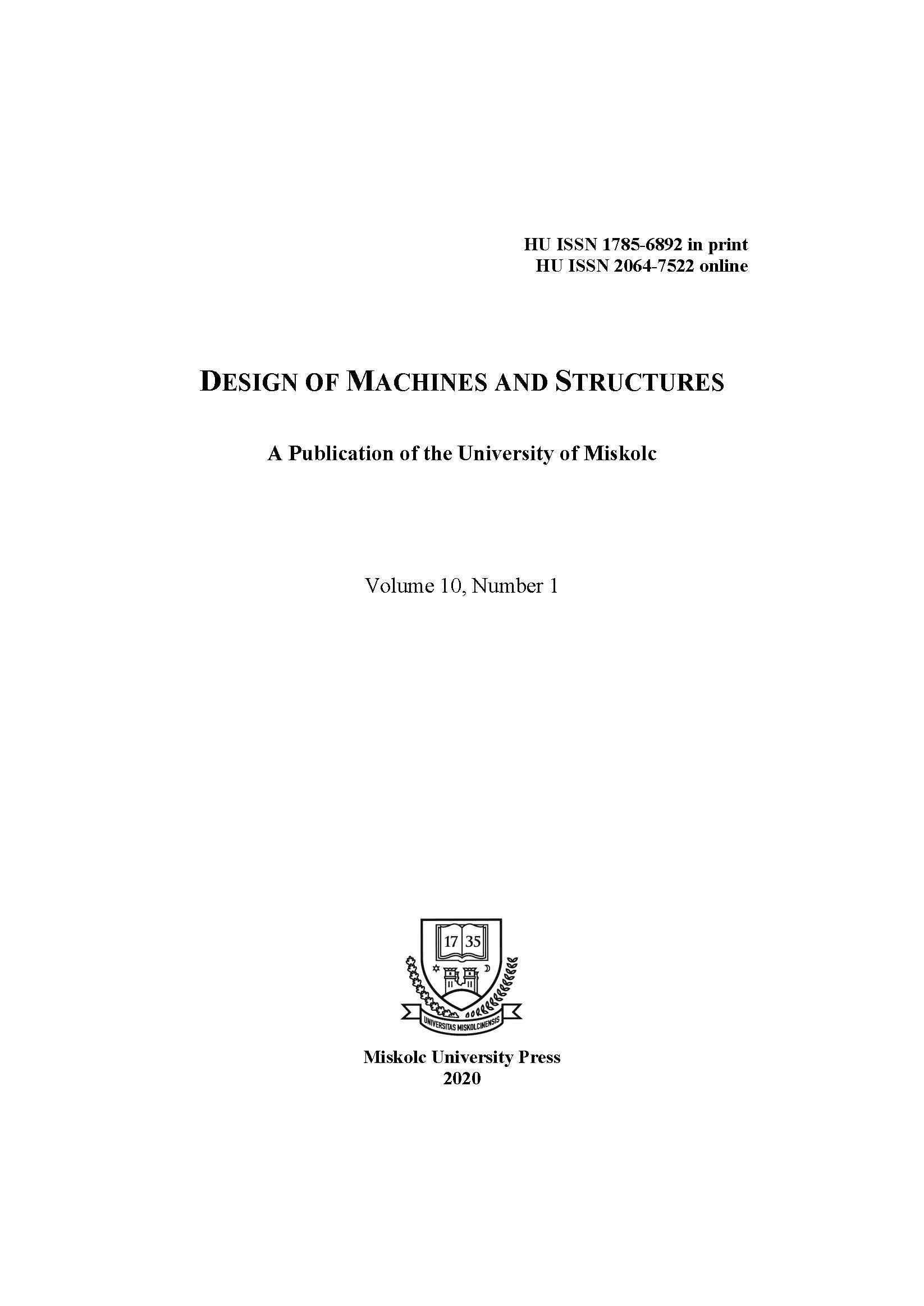Mismatch effect on fatigue crack propagation limit curves of GMAW joints made of S960QL and S960TM
DOI:
https://doi.org/10.32972/dms.2020.004Kulcsszavak:
high strength steel, gas metal arc welding, mismatch, fatigue crack growth, limit curveAbsztrakt
Welded structures cannot be produced without imperfections, cracks or crack like defects. Among the structural steels, 960 MPa strength category represents a reliable application possibility. Consumables are also available, but the behaviour of mismatch types under cyclic loading condition is not yet clear. In order to know the fatigue crack propagation resistance of 960 MPa strength category steels and their gas metal arc welded joints fatigue crack growth tests were performed. The tests results were analysed and fatigue crack propagation limit curves were determined.
Hivatkozások
Schütz, W. (1996). A history of fatigue. Engineering Fracture Mechanics, Vol. 54, No. 2, pp. 263–300, ISSN 0013-7944.
Paris, P. C., Gomez, M. P., Anderson, W. E. (1961). A rational analytic theory of fatigue. The Trend in Engineering, Vol. 13, pp. 9–14.
Paris, P., Erdogan, F. (1963). A critical analysis of crack propagation laws. Journal of Basic Engineering, Vol. 85, pp. 528–533.
Schroepfer, D., Kannengiesser, T. (2016). Stress build-up in HSLA steel welds due to material behavior. Journal of Materials Processing Technology, Vol. 227, pp. 49–58, ISSN 0924-0136.
Lausch, T., Kannengiesser, T., Schmitz-Niederau, M. (2013). Multi-axial load analysis of thick-walled component welds made of 13CrMoV9-10. Journal of Materials Processing Technology, Vol. 213, pp. 1234–1240, ISSN 0924-0136.
Schroepfer, D., Kromm, A., Kannengiesser, T. (2015). Improving welding stresses by filler metal and heat control selection in component-related butt joints of high-strength steel. Welding in the World, Vol. 59, No. 3, pp. 455–464, ISSN 0043-2288.
Ravi, S., Balasubramanian, V., Nemat Nasser, S. (2004). Effect of mismatch ratio (MMR) on fatigue crack growth behaviour of HSLA steel welds. Engineering Failure Analysis, Vol. 11, No. 3, pp. 413–428, June 2004, ISSN 1350-6307.
Mobark, H. F. M., Lukács, J. (2018). Mismatch effect influence on the high cycle fatigue resistance of S690QL type high strength steels. 2nd International Conference on Structural Integrity and Durability, Dubrovnik, Croatia, October 2–5.
Balogh, A., Lukács, J., Török, I. (eds.) (2015). Weldability and the Properties of the Welded Joints. University of Miskolc, Miskolc, p. 324 (In Hungarian), ISBN 9789633580813.
Dobosy, Á. (2017). Design limit curves for cyclic loaded structural elements made of high strength steels. PhD Thesis, István Sályi Doctoral School of Mechanical Engineering Sciences, University of Miskolc, Miskolc (In Hungarian).
Gáspár, M. (2016). Welding technology development of Q+T high strength steels based on physical simulation. PhD Thesis, István Sályi Doctoral School of Mechanical Engineering Sciences, University of Miskolc, Miskolc, (In Hungarian).
BS 7910:2013+A1:2015: Guide to methods for assessing the acceptability of flaws in metallic structures. BSI Standards Limited, 2015.
ASTM E647-15e1: Standard Test Method for Measurement of Fatigue Crack Growth Rate. ASTM International, 2015.
Lukács, J. (2003). Fatigue crack propagation limit curves for different metallic and non-metallic materials. Materials Science Forum, Vol. 414–415, pp. 31–36, ISSN 1662-9752.

